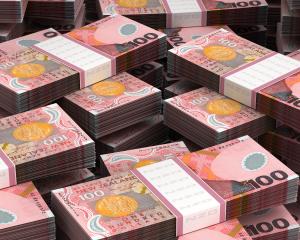Farmers producing prime lambs are looking forward to doubling their returns this year, just 12 months after many were questioning whether lamb farming had a future.
The turnaround in sheep prices is due to a 23% decline in the number of lambs available for slaughter in New Zealand, following land use change to dairying and dairy support and also drought.
With New Zealand accounting for 75% of internationally traded lamb, the shortage here has forced international prices to rise.
According to the ANZ commodity price index, which tracks the price of our main commodity exports, April's lamb index reached record levels as a result of soaring international demand and prices.
A year ago, store lambs made $30, but this year lambs of a similar quality have fetched closer to $70.
Prime lambs that last year sold for $50 are now returning $85.
The forecast has given Lee Stream farmer Boyd Tisdall a welcome boost.
Lamb sales make up two-thirds of his farm income and last year he averaged just $44 for his prime and store lambs - lambs sold to other farmers to finish.
This year, he expects to average about $85.
News meat companies are forecasting next season's lamb prices to mirror this year's has delighted Mr Tisdall, who says the certainty of consistent pricing will benefit all sheep farmers.
Alliance Group chief executive Grant Cuff has just returned from visiting key markets and said that apart from currency movement, there was no reason he could see for lamb prices to ease next year.
"We would not anticipate any reduction in market prices for next year at this time," he said in an interview.
A year ago, it was a different matter.
Low income from lambs forced Mr Tisdall to cut spending, and he applied fertiliser to only half his 1250ha Saddleview Station.
With this year's higher income, he plans to spread more fertiliser and catch up on other deferred maintenance.
Mr Tisdall has no plans to increase ewe numbers to take advantage of the high lamb prices, saying his farm has the right balance between sheep and cattle.
Domestic retail lamb prices have risen about 20% in response to higher international prices, according to New Zealand Beef and Lamb Marketing Bureau manager Rod Slater.
However, he doubted another year of high export values would force retail prices even higher, as retailers and processors had already factored in higher costs.
Local retailers have to match export lamb prices to attract stock and Mr Slater said even though export prices had almost doubled, competition meant the retail price had not.
Mr Slater said that anecdotally there appeared to have been a reduction in domestic-lamb consumption due to the high prices.











